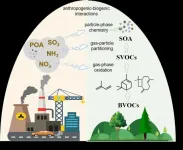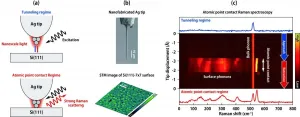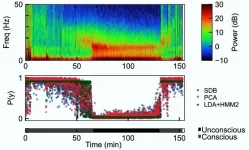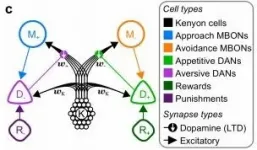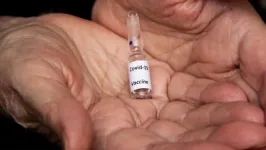(Press-News.org) Researchers have traced the remaining last steps of the biological pathway that gives oats resistance to the deadly crop disease take-all.
The discovery creates opportunities for new ways of defending wheat and other cereals against the soil-borne root disease.
The research team have already taken the first step in this aim by successfully reconstituting the self-defence system in the model plant Nicotiana benthamiana.
Further experiments to establish the avenacin biosynthetic pathway in wheat's more complex genome, to test if it will provide the same resistance to take-all and other diseases, have already been initiated in collaboration with the National Institute of Botany (NIAB) in Cambridge.
The research by CEPAMS - a collaboration between the John Innes Centre and the Chinese Academy of Sciences - also delivers fresh insights into the mechanisms that shape genome architecture and adaptive evolution in plants.
Avenacins are antimicrobial compounds synthesised in the roots of oats where they offer protection against soil-borne diseases such as take-all. This fungal pathogen causes huge yield losses in wheat and there is no effective means of control.
Wheat and other cereals and grasses do not make these compounds but a better understanding of how they are produced in oat will give crop scientists knowledge they need to create disease resistant lines of wheat using modern technologies.
Earlier experiments had characterised and cloned ten avenacin biosynthetic pathway genes found in the oat genome.
Here, using a genomics-driven approach, with sequencing carried out by Professor Bin Han's group at the Chinese Academy of Sciences, the team elucidated the complete pathway, encoded by 12 genes.
They found that genes are clustered next to each other in the genome like beads on a string and organised along the chromosome approximately in the same order as the biosynthetic pathway - like a recipe written out in order of ingredients.
The avenacin gene cluster is located very close to the end of one arm of chromosome 1 of oat. It is arranged such that the early pathway genes are closer to the end of the chromosome (the telomere) and the late pathway genes are further in.
The team speculate this may be because gene mutations in the late avenacin pathway can result in the accumulation of compounds that negatively affect plant growth while mutations in the early pathway genes do not.
The orientation of these late pathway genes away from the telomere region means the plant is less likely be affected by toxins.
Comparison with the sequenced genomes of other cereals and grasses revealed that the avenacin cluster has formed since the divergence of oats from these other plant species which, the researchers presume, is due to a particular set of selective pressures.
Professor Anne Osbourn, joint corresponding author of the research along with Professor Bin Han said: "Our investigations show that plant genomes are able to shuffle and evolve their genes to enable them to adapt to particular stresses - in this case to soil-borne fungal diseases such as take-all. During this process, winning combinations of genes that provide a selective advantage can be recruited and relocated from around the genome and assembled into a cluster like beads on a string. This clustering will enable the winning gene-set to be passed on from generation to generation and mitigate against incomplete inheritance of the pathway genes with associated deleterious effects."
The study offers the latest example of plant biosynthetic gene clusters for different types of compounds including drugs.
Investigations of how widespread these types of genomic organisations are in the Plant Kingdom hinges on the generation of new genome sequences for a wider variety of plants.
INFORMATION:
This should be made possible with the onset of new large-scale genome sequence initiatives such as the Earth BioGenome and Darwin Tree of Life Projects.
The study: Subtelomeric assembly of a multi-gene pathway for antimicrobial defense compounds in cereals, appears in Nature Communications http://dx.doi.org/10.1038/s41467-021-22920-8
They may be tiny weapons, but Brigham Young University's holography research group has figured out how to create lightsabers -- green for Yoda and red for Darth Vader, naturally -- with actual luminous beams rising from them.
Inspired by the displays of science fiction, the researchers have also engineered battles between equally small versions of the Starship Enterprise and a Klingon Battle Cruiser that incorporate photon torpedoes launching and striking the enemy vessel that you can see with the naked eye.
"What you're seeing in the scenes we create is real; there is nothing computer generated about them," said lead researcher Dan Smalley, a professor of electrical engineering at BYU. "This is not like the movies, where the lightsabers ...
May 7, 2021 - Early in the COVID-19 pandemic, healthcare systems scrambled to modify patient care processes - particularly when it came to strategies aimed at reducing the risk of hospital-related complications. A look at how one hospital applied its learning health system (LHS) framework to respond to a COVID-19-related increase in hospital-acquired pressure injuries (HAPIs) is presented in the May/June Journal for Healthcare Quality (JHQ), the peer-reviewed journal of the National Association for Healthcare Quality (NAHQ). The journal is published in the Lippincott portfolio by Wolters Kluwer.
"Given the significant challenges ...
Today, deliveries via cesarean sections, or c-sections, have become quite common globally. Sometimes, c-sections are a medical necessity when normal deliveries become risky either for the mother or the baby. At other times, it can be a choice. C-sections today have become a considerably safer procedure than it was a few decades ago, but there is need to refine it further.
In a END ...
Children ages two to five who have the most common form of cystic fibrosis (CF), caused by two copies of the F508 gene mutation, have not had any modulator treatments available to them until recently. A new study authored by researchers at Children's Hospital Colorado and published May 6, 2021, in Lancet Respiratory Medicine shows that the CFTR modulator - lumacaftor/ivacaftor - can be safe and well-tolerated for this age range for up to 120 weeks, allowing younger children to begin proactive treatment of CF earlier in their lives.
CF affects more than 70,000 people worldwide and is a chronic, progressive, life-shortening genetic disease caused by an absent or defective protein called the CF transmembrane conductance regulator (CFTR) protein, resulting from mutations in both copies ...
Despite their extremely small size, submicron atmospheric aerosols are critical pollutants with climate change, air quality, and human health implications. Of these particles, secondary organic aerosols (SOA) form when volatile organic compounds (VOCs) oxidize to lower volatility products that bond with and increase aerosol particle size, or in some cases, they may simply exist by themselves. SOA constitutes a significant fraction of the global aerosol mass. Scientists are attempting to improve future aerosol modeling, but several discrepancies still exist between model-simulated and field-observed SOA budgets.
''Large uncertainties in model assessments of SOA budgets and correspondingly, its climate effects, ...
Nanofabrication of electronic devices has reached a single nanometer scale (10-9 m). The rapid advancement of nanoscience and nanotechnology now requires atomic-scale optical spectroscopy in order to characterize atomistic structures that will affect the properties and functions of the electronic devices.
The international team headed by Takashi Kumagai at Institute for Molecular Science discovered a huge enhancement of Raman scattering mediated by a formation of an atomic point contact between a plasmonic silver tip and a Si(111)-7×7 reconstructed surface. This was achieved by means of state-of-the-art low-temperature tip-enhanced ...
Anesthestic drugs act on the brain but most anesthesiologists rely on heart rate, respiratory rate, and movement to infer whether surgery patients remain unconscious to the desired degree. In a new study, a research team based at MIT and Massachusetts General Hospital shows that a straightforward artificial intelligence approach, attuned to the kind of anesthetic being used, can yield algorithms that assess unconsciousness in patients based on brain activity with high accuracy and reliability.
"One of the things that is foremost in the minds of anesthesiologists is 'Do I have somebody who is lying in front of me who may be conscious and I don't realize it?' Being ...
Even the humble fruit fly craves a dose of the happy hormone, according to a new study from the University of Sussex which shows how they may use dopamine to learn in a similar manner to humans.
Informatics experts at the University of Sussex have developed a new computational model that demonstrates a long sought after link between insect and mammalian learning, as detailed in a new paper published today in Nature Communications.
Incorporating anatomical and functional data from recent experiments, Dr James Bennett and colleagues modelled how the anatomy and physiology of the fruit fly's brain can support learning according to the reward prediction error (RPE) hypothesis.
The computational model indicates how dopamine neurons in an area of ...
PITTSBURGH, May 7, 2021 - In a paper published today in Nature Communications, an international group of collaborators led by researchers at UPMC Children's Hospital of Pittsburgh have identified a genetic cause of a rare neurological disorder marked by developmental delay and loss of coordination, or ataxia.
The disorder, scientists found, is caused by mutations in a protein called GEMIN5--one of the key building blocks of a protein complex that controls RNA metabolism in neurons. No mutations in GEMIN5 were previously linked to any genetic disease. ...
Luxembourg, 7 May 2021 - In a new position statement, Alzheimer Europe has issued a call for prioritisation of people with dementia and their carers in national COVID-19 vaccination strategies, urging governments to recognise the disproportionate effect of the pandemic on these groups.
Alzheimer Europe has today issued a call for people with dementia and their carers to be given priority in the ongoing COVID-19 vaccination campaigns across Europe.
In its position statement, Alzheimer Europe notes that people with dementia have almost twice the risk for developing COVID-19 compared to their ...




